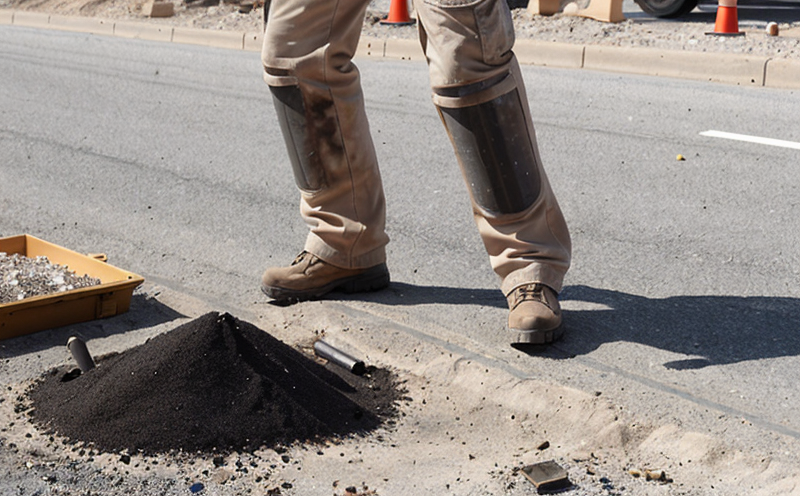EN 13631 Part 11 Determination of Gap Test Sensitivity
The determination of gap test sensitivity is a critical procedure in the mining sector to ensure that blasting materials are safe and effective. This service adheres strictly to EN 13631 Part 11 standards, which provide a standardized method for assessing the sensitivity of explosives used in mining operations.
The process involves testing the blasting materials under controlled conditions to measure their response to various stimuli. This is essential for ensuring that the materials do not detonate prematurely or fail to perform as intended during blasting activities. By accurately determining the gap test sensitivity, mining companies can optimize their blasting procedures and enhance safety measures.
During this process, we use advanced instrumentation to ensure precision and reliability. Specimen preparation is critical; it involves selecting appropriate samples that are representative of the batch being tested. The specimens must be prepared in a manner that simulates real-world conditions as closely as possible to yield accurate results.
The testing procedure itself is highly controlled. Samples are placed in a gap, which is gradually increased until detonation occurs. This allows us to precisely determine the minimum gap required for detonation under specific conditions. The data collected from these tests provides valuable insights into the performance characteristics of the blasting materials used in mining operations.
The results of this testing are reported comprehensively and transparently. Our team ensures that all findings are documented meticulously, providing a clear understanding of the sensitivity levels of the explosives tested. This information is crucial for decision-making processes within mining companies regarding the safe handling and application of these materials.
Our adherence to EN 13631 Part 11 guarantees that our testing meets international standards, ensuring consistency and reliability across different mining operations. This service is vital for maintaining safety protocols in the mining sector while optimizing blasting efficiency.
The gap test sensitivity determination plays a crucial role in risk management strategies within mining companies. By understanding the precise sensitivities of the materials used, companies can implement targeted safety measures to prevent accidents and ensure compliance with regulatory requirements.
Scope and Methodology
| Test Procedure | Parameters Measured |
|---|---|
| Determination of minimum gap required for detonation | Sensitivity level in millimeters (mm) |
| Controlled specimen preparation | Representative sample characteristics |
| Testing under standardized conditions | Environmental factors |
The methodology for determining gap test sensitivity involves several key steps. Specimens are prepared according to the specified criteria, ensuring they accurately represent the batch of blasting materials being tested. These specimens are then placed in a controlled environment where the gap between them is systematically increased.
At each increment, we monitor the response of the specimens until detonation occurs. The smallest gap at which this happens is recorded as the sensitivity level for that particular set of conditions. This process is repeated under different conditions to ensure robust and reliable data collection.
The controlled environment includes factors such as temperature, humidity, and pressure, all of which can affect the behavior of explosives. By holding these variables constant, we can isolate the effect of the gap size on detonation sensitivity. This ensures that our results are accurate and reproducible.
Eurolab Advantages
Our expertise in EN 13631 Part 11 testing ensures that our results are accurate, reliable, and internationally recognized. We employ state-of-the-art instrumentation to achieve precise measurements, which is essential for the mining sector where accuracy can mean the difference between safety and risk.
We have a team of highly skilled professionals with extensive experience in explosives testing. Our personnel are trained to follow international standards rigorously, ensuring that every test adheres strictly to the specified protocols. This level of expertise allows us to provide clients with detailed insights into their blasting materials' performance characteristics.
Our facilities are equipped with cutting-edge equipment designed specifically for explosives testing. These tools allow us to conduct tests under a wide range of conditions, providing comprehensive data that can be used to optimize blasting procedures and enhance safety measures.
Competitive Advantage and Market Impact
- We provide accurate and reliable results in compliance with international standards.
- Our expertise ensures that we stay ahead of regulatory changes, ensuring our clients are always compliant.
- Our comprehensive testing services help mining companies optimize their blasting procedures, leading to increased efficiency and reduced costs.
- Achieving higher safety levels by identifying potential risks early.
- Promoting compliance with international standards, enhancing market reputation.
- Facilitating safer work environments for miners and other personnel involved in the extraction process.
The accurate determination of gap test sensitivity is crucial for maintaining high safety standards in mining operations. By identifying potential risks early on through precise testing, we help our clients stay ahead of regulatory changes. This proactive approach not only enhances compliance with international standards but also promotes a safer work environment for everyone involved.





